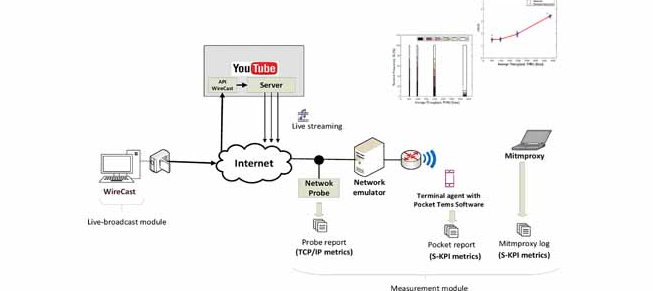Abstract:
YouTube Live is one of the most popular services on the Internet, enabling easy streaming of a live video with the acceptable video quality. Thus, understanding user perception of this service is of the utmost importance for network operators. As in other video streaming services, YouTube Live traffic is affected by delays and interruptions due to unfavorable network conditions, which translate into unacceptable initial reproduction times, image freezes, or abrupt changes in image quality. Detecting these events is key to ensure an adequate quality of experience (QoE). Unfortunately, data encryption makes it very difficult for operators to monitor the QoE from packet-level data collected in network interfaces. In this paper, an analytical model to estimate the QoE for encrypted YouTube Live service from packet-level data collected in the interfaces of a wireless network is presented. The inputs to the model are TCP/IP metrics, from which four service key performance indicators (S-KPIs) are estimated: initial video play start time, video interruption duration, video interruption frequency, and image quality. The model is developed with an experimental platform consisting of a live streaming server, a terminal agent, a radio access network (e.g., Wi-Fi access point), a network-level emulator, a probe software, and a man-in-the-middle proxy. Model assessment is carried out by comparing the S-KPI estimates with measurements from the terminal agent under different network conditions introduced by the network emulator.

